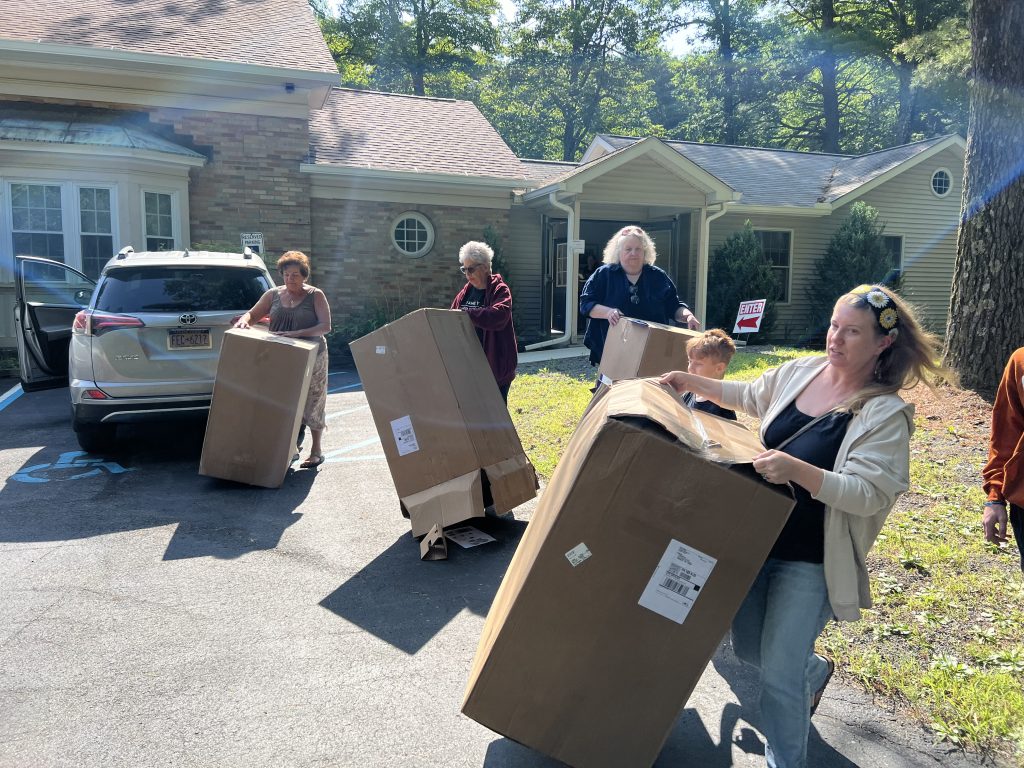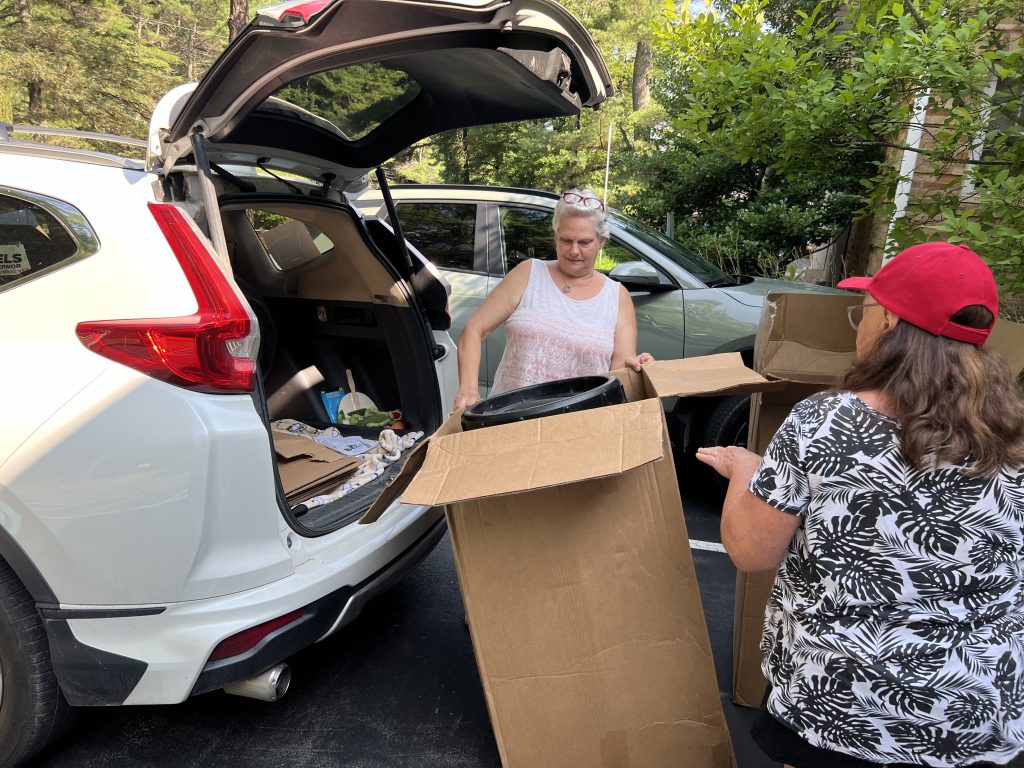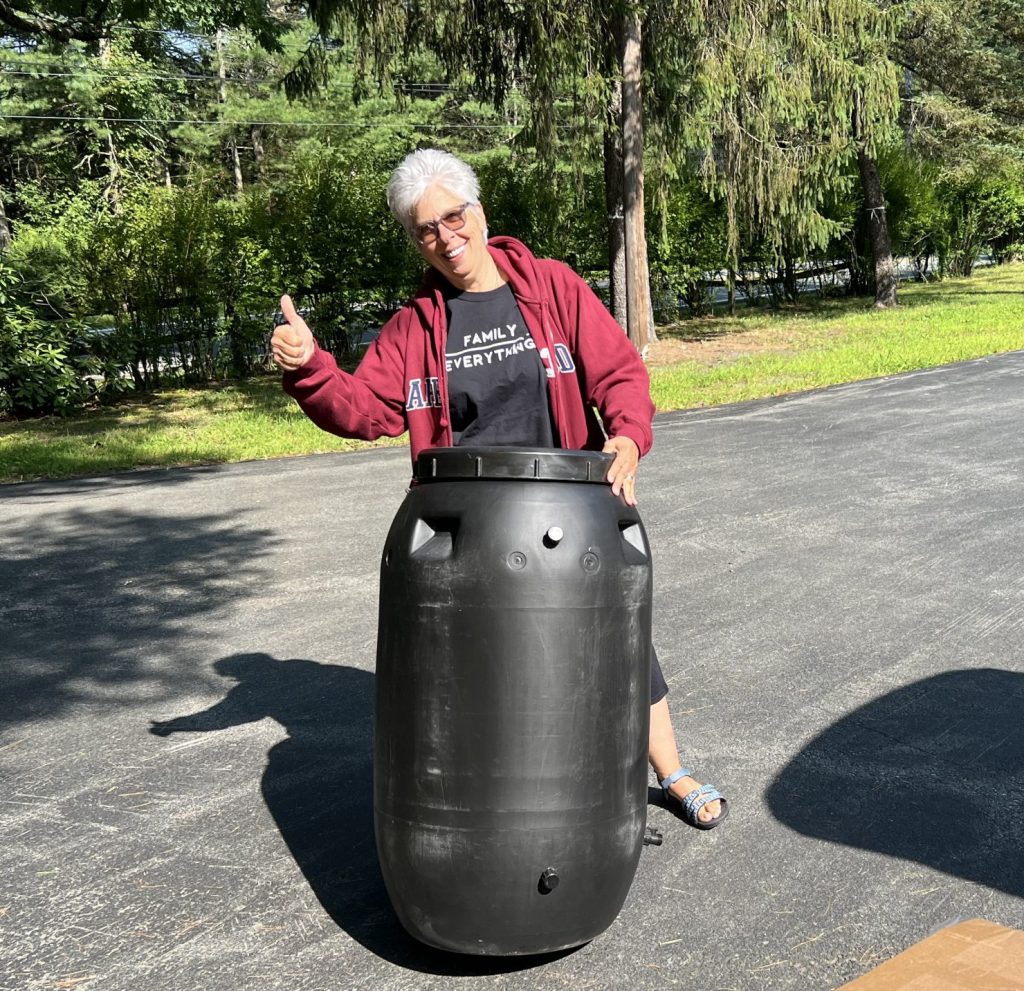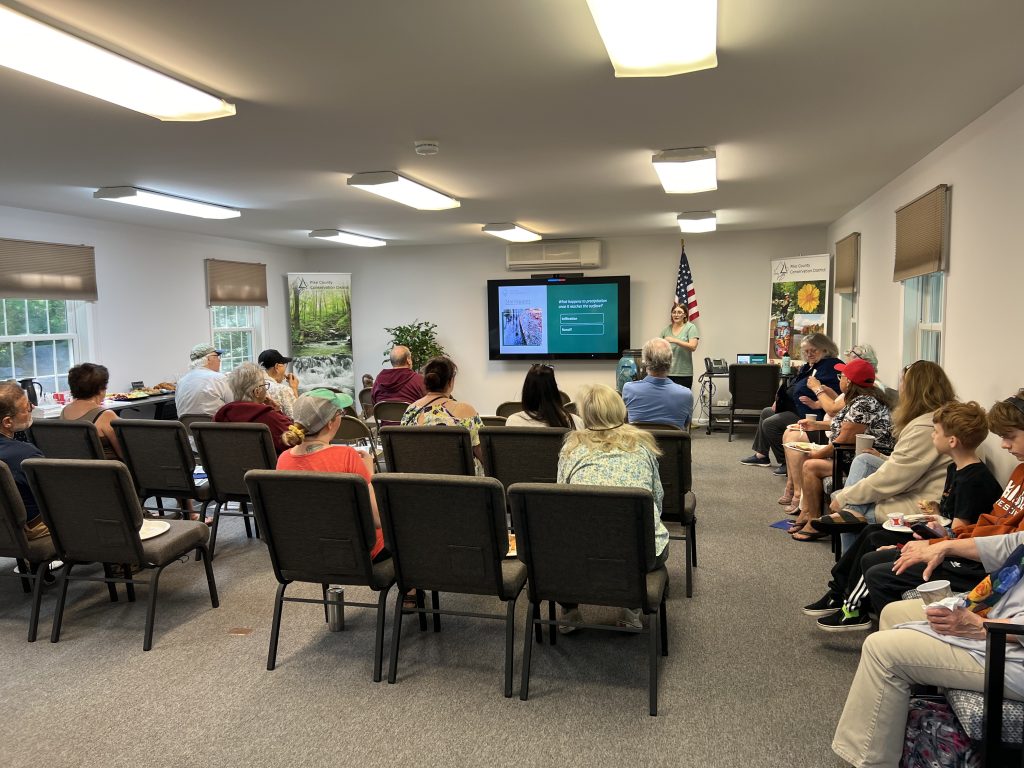
Roll out the (rain) barrels to promote sustainability and flood prevention
| July 27, 2024
There was a bit of pushing and shoving in the parking lot of the Pike County Conversation District in Hawley, Pa., on Saturday morning.
No one was being rude (this was not, after all, a Black Friday sale at a Best Buy) but there was a lot of wrestling as 18 lucky folks got to take home a rain barrel, courtesy of the Pennsylvania Association of Conservation Districts.
Getting it into your SUV or truck required a bit of effort.
The 55-gallon barrels aren’t heavy as much as they are bulky, and slipping them out of their boxes required some forethought.
Carolyn Gjoka from Greentown had it pretty well figured out.

Learning from her experience working in restaurants (“where we get lots of boxes”) she brought her box cutters and positioned the box adjacent to her trunk, lifted the box and let the barrel slide out with some help from her buddy, Karen Gifford, also from Greentown and another happy rain barrel recipient.
“I wanted one because it can capture the rain coming off my roof. The force of that runoff near one of my trees has actually exposed its roots,” Gjoka said.
Barrels bring benefits
One of the ways that weather has changed recently is in the amount of rain we get during storms.
Rain barrels are one of the easier ways we can help prevent flooding as well as minimize risks from the toxics that could be carried in the water. Collecting roof runoff reduces the amount of water that flows from your property.
About 25 people came to the “Barrels and Breakfast” event, which was “an awesome turnout,” according to the host, Emily Mansfield, communications officer of Pike County Conservation District.
Almost as soon as the event was announced, the slots filled up.
Clearly, these are people who are familiar with the benefits of rainwater barrels: That roof runoff is part of a watershed-wide problem called stormwater — the excess water from rain, snowmelt and irrigation that doesn’t absorb into the ground. If water can get to a permeable surface and not pavement, it can get absorbed.
In many places in the watershed, roof runoff spills from gutters onto driveways, scours streets and then runs into creeks, streams and rivers and eventually into the Delaware River, carrying with it not just roof residue but picking up whatever is on the ground in its path, like fertilizer or pesticides, or leaks of car fluids as well as pet waste.
At the Pike County Conservation District office, Mansfield explained how watersheds are sort of tucked inside each other.
We were in the tiny watershed of the nearby Blooming Grove Creek, which is a subwatershed of the Lackawaxen watershed, which is in turn a subwatershed of the Delaware River — the drinking water source for 14+ million people.
And roof water isn’t very appetizing!

Careful usage is called for
The water collected in the barrels can be used to water gardens, but Mansfield cautioned that if you use it for your vegetable garden, make sure you water the soil and not the vegetables themselves since roof water can contain bird poop as well as whatever the roof is made of.
Before the barrels were distributed, there was the promised breakfast, as well as a presentation from Mansfield about stormwater.
We learned that the No. 1 source of stormwater pollution in Pennsylvania is sediment. That’s basically dirt swept into waterways that give us “those chocolate-milk-colored streams,” Mansfield said.
Sediment is hard on the important critters that live in the water, like fish and macroinvertebrates.
That sediment is pulled from the earth by the force of water and will stay mixed with the water until the water slows down. When it does, the silt that drops to the bottom of the river or stream builds up, which might change how the stream runs. That silt is easy for the next storm to pick up and send farther downstream.
About those rain barrels
A quarter of an inch of rain event can fill one of those 55-gallon barrels. Mansfield quoted NOAA’s estimate that Pike County gets about 60 inches of rain a year.
Totaling the effect of just these 18 rain barrels, that would mean that nearly 1,000 gallons of stormwater are prevented from becoming stormwater runoff — and that’s just one rain event.
The barrels weigh about 400 pounds when full, and Mansfield explained that it’s best to keep them about a foot off the ground but put them on something really solid, like concrete blocks.
In winter, keep them empty because water will freeze, expand and crack the barrel.
For more information about stormwater and other events, check the link for the Pike County Conservation District. Its mission is the long-term and sustainable use of Pike County’s natural resources.
Every county in Pennsylvania has a conservation district. To find out about yours, check the Pennsylvania Association of Conservation Districts.







